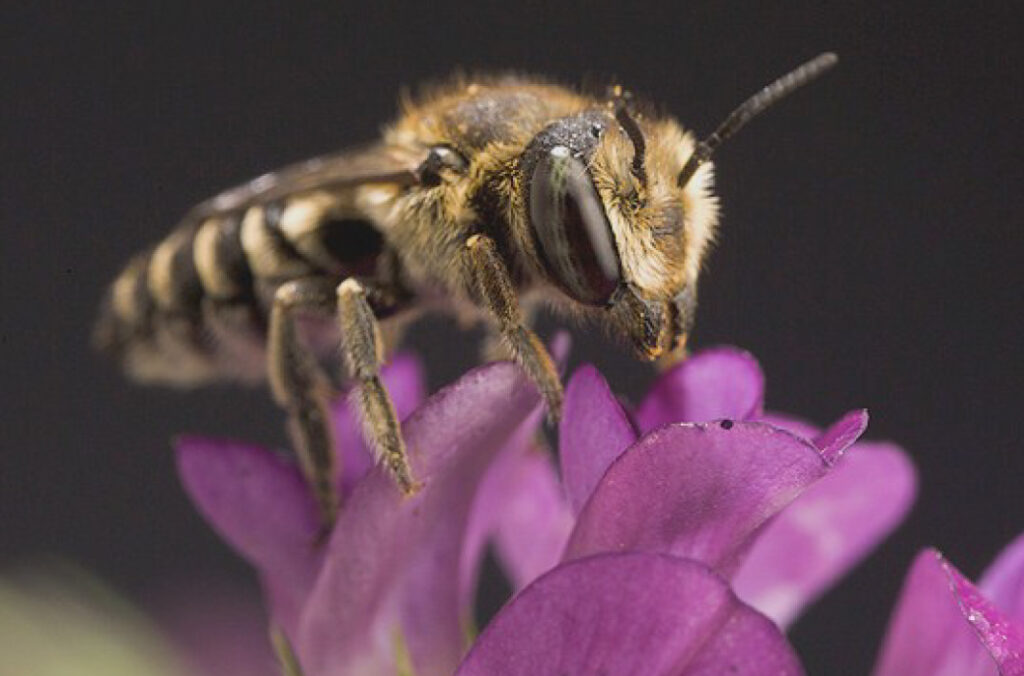By Karen Laitala, Vegetation Coordinator
Though we live dramatically different lifestyles, my oldest sister who resides in a subdivision in a north Texas city and I, the Montana “country living” member of our family, share a love of bees and an appreciation for pollinators. I think this mutual admiration may have originated with our love of gardening, which probably started with our grandparents. Our maternal grandfather had an annual competition for largest tomato with our next-door neighbor (who was also our uncle), and our paternal grandmother grew beautiful ornamental flower gardens, including an entire hillside of wildflowers. Neither of these pursuits would have come to fruition without pollinators.
As a trained plant scientist, I’d have to assert that my professional practice is deeply rooted in my affection for native plants and biologically diverse natural habitats. Employed as the noxious weed project coordinator for Powell County and the Vegetation Coordinator for the Blackfoot Challenge, my job necessarily includes guiding and coordinating the application of pesticides known as herbicides.

Pesticides in general include insecticides designed to control a wide variety of insects, fungicides for mold and mildew management, disinfectants to prevent the spread of bacteria, compounds used to regulate rodents such as mice and rats, and herbicides (or weed killers), substances designed to manage unwanted plant populations. There are some important differences worth noting between insecticide and herbicide structure and mode of action. Most insecticides are specifically formulated to act upon insect nervous systems by contacting and entering their bodies either directly through the insect integument (skin) into the blood or by entering the respiratory system through the spiracles (air valves along the side of an insect’s body which control gas exchange). Herbicides, in most cases, are designed to permeate the plant cell wall, the plasma membrane, and organelle (chloroplast and mitochondria) membranes of a plant cell to reach its site of action where accumulation causes phytotoxicity. Complex physicochemical characteristics of the herbicide molecule in the plant cells control herbicide absorption, accumulation, and effectiveness. In other words, insecticides and herbicides are very different pesticides with very specific formulations that target very different organisms in very different ways.
Montana’s state listed noxious weeds are defined by law as any exotic (non-native) plant species that has a significant negative effect on our agricultural, forestry, livestock, wildlife and other beneficial resources “or that may harm our native plant communities”. Of the 4,000 plus species of bees in this country, the vast majority are solitary (or otherwise known as “wild” or native) bees, and these important natural pollinators rely on the very plant communities that noxious weeds threaten by their aggressive invasive nature.

Due to the abundance (approximately 7.6 million acres) of noxious weeds across the state, herbicides are often a necessary management tool of larger-scale treatment projects. That being said, there are a number of precautions that can be taken as well as resources available for herbicide and other pesticide applicators to formulate sound management practices that help protect bees and other pollinators. A few examples include: (1) Applying pesticides in the evening when bees are not active, (2) Not exceeding the ratio of chemical to water listed on the pesticide container label. A host of further information about pollinators, their importance as part of our ecosystem, economy, and (in my opinion) their aesthetics in our landscape can be found on the MSU Pollinator Health Center website https://montana.edu/pollinators/.
